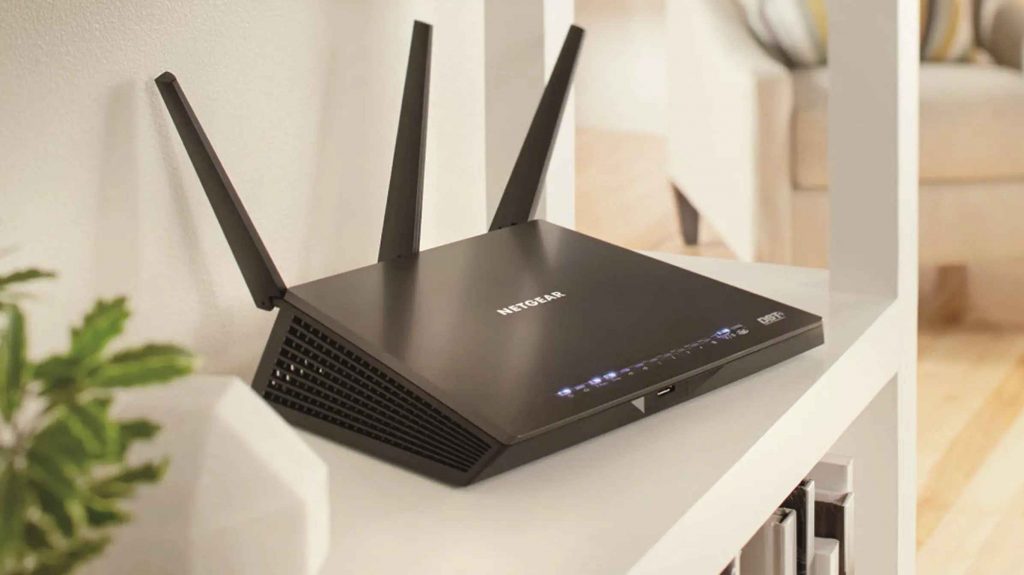Are you having an issue with your network’s connectivity? Now may be the perfect time to learn how to ping a router to figure out the problem and fix it.
Understanding whether or not your network connection is functioning properly is crucial, given the growing demand for internet bandwidth in today’s world. The best way to test your connection in case of issues is to use the ping command.
You may need to ping your router when you want to test your network’s connectivity. Now for those not interested in technology, this may sound strange, and they wonder what pinging means. If you are having trouble with your connectivity, you may wonder how to ping a router, so let’s discover.

How to Ping a Router
If you want to ping your router, you must first know the router’s default IP address. You may find the IP and the ping command through the device’s Command prompt form, where you may send the ping.
The hostname of the server is the first information you see. This demonstrates that your connection to the server is active.
Next is the number of bytes transferred to the server, which normally displays 32. The server’s response time is shown in the next four lines. You can see how many bytes of information were sent back and how long it took for the response to arrive in milliseconds.
You can see how many routers the packet will pass through before ending. When you notice “request timed out,” it means that the packets could not connect to the host, which indicates a connection issue.
The process’s overall statistics are displayed in the Ping statistics section. The packets line indicates how many packets were transmitted and received and whether any were lost.
Finally, rough round trip times demonstrate the connection speed. The connection becomes poorer the longer the time is.
From Windows
No matter the version, doing a ping test in Windows is not too difficult.
- Launch Windows PowerShell or the Command Prompt and enter the appropriate Command.
- Your keyboard’s Windows key should be depressed before you start typing “command prompt” and choose Command Prompt.
- Press Enter after typing “ping google.com.”
- Enter the router’s IP address to check the connection between your device and your home router. The most common scenario is that your router’s default address is 192.168.1.1. You must enter the command “ping 192.168.1.1” and click Enter to reach it.
From Mac
Like Windows, Mac processes text instructions using its Terminal software.
- A Mac should have Finder open.
- From the left menu, select Applications. If you do not see it, press the Command + A keys on your keyboard simultaneously.
- A second click on Utilities will launch the Terminal application.
- Press Enter after entering the ping command: ping 192.168.1.1.
- When you do so, the ping test between your MacBook and router at home will start.
- To end the test, simultaneously press the Command and C keys on your keyboard.
From an iPhone
Currently, no built-in app allows you to perform a ping test. Instead, you will need to install a network connection testing-specific program.
Of course, it is advisable to withdraw from your Wi-Fi connection and install one of the apps using your cellular data network if you have issues with your connection.
This same holds for issues with your cellular connection. In such a situation, you’ll need to locate a functional Wi-Fi network to access the App Store.
From Android
As with iPhones, Android phones also do not have a built-in ping or echo reply procedure. You may install a third-party application, enter the source IP address of the destination host, get statistics on packet loss, and more.
On the Google Play Store, you will find plenty of excellent apps that will allow you to ping from your Android phone.
How Does a Ping Work
Ping operates by delivering an ICMP Echo Request to a predetermined network interface and then waiting for a response. A ping signal is sent to the designated address when a ping command is given. The destination host sends the echo reply packet in response to receiving the echo request.
This method checks whether the target host is available and calculates the round-trip time (RTT) or latency. RTT is a metric used to determine how quickly a response was given.
The process’s duration, expressed in milliseconds, begins when a browser submits a request to a server and ends when the server responds. A crucial performance indicator for web applications is RTT.
The results of multiple requests, typically four or five, sent by ping commands are displayed. The results of the echo ping indicate if a certain request was successful in receiving a response.
Additionally, it contains the amount of data received, the time it takes to get a response, and the time to live.
Router overview
One or more bandwidth networks can be connected using one router. By sending data packs to their intended IP addresses, it manages traffic between different networks and permits several devices to share an internet connection.
Although there are many different routers, most transfer data between LANs or local area networks and WANs or wide area networks. A LAN is a group of connected devices confined to a certain region. Typically, a LAN needs just one router.
In comparison, a WAN is a sizable network dispersed across a sizable geographic area. For example, large organizations and businesses with numerous sites across the nation will require individual LANs for each location, which link to the other LANs to form a WAN.
Since a WAN is dispersed over a large area, numerous routers and switches are frequently required.
Ping overview
You may deliver a ping command using Windows, Mac, or Linux computers. It is a useful tool that has been around since the 1980s. Sonar technology, which puts out a sound wave and then waits for a ping or echo in response, is where the phrase originates. An object must be further distant the longer the delay.
As data requests travel worldwide, networks operate under the same premise. Pinging can also reveal network slack or other delay issues, such as a downed server. Running a ping test is not that difficult.
To test and confirm that a specific destination IP address exists and it can accept requests for computer network management, a user can use a basic internet software called ping. A ping is a signal you send to see if a certain device is functional. If you receive a signal back, the device is up and running.
Ping may also be used as a diagnostic tool to check the functionality of a host machine that a user is attempting to connect to.
Any operating system can use ping with networking capabilities, including most embedded network administration programs. The phrase is also used to measure and test how quickly a data signal moves between two locations, such as a computer and a website.

How to Incorporate Ping for Troubleshooting
The norm for debugging ICMP messages is using echo queries and responses. Ping is a network diagnostic tool that comes with almost every operating system. However, each manufacturer has a somewhat different exact implementation.
The mainstay of conventional network troubleshooting is ping. You may ping an IP address, for instance, by entering 172.168.9.13. If the ping succeeds, the connection is active, and the machines can communicate.
However, if the ping is effective but the response time is very long, this may signal network congestion, improper routing, or slow speeds. Even unsuccessful ping attempts provide useful diagnostic data. Ping is the industry norm when it comes to measuring network speed.
To run ping, all that is required is the ping command and a destination, like a name or address of a remote computer. Ping is simple to use in many scripts because it is a command-line application. The output of the ping commands can be collected into a text file for subsequent examination by an administrator, who can also track how many pings were conducted.
Read More: How Can I Test My Router For Problems
Conclusion
As you can see, knowing how to ping a router may help you figure out any connectivity issues. Pinging a router, a website, or any other wirelessly connected device returns vital data on network access, network performance, the outgoing interface, and other things.
When you know how to use the ping command on your own, there is no reason to go to a repair shop and spend money needlessly. Instead, with the ping control, you may figure out on your own what the issue is and manage to fix it in no time.
However, as anyone that is even a little tech-savvy will tell you, pinging is the easiest way to check if there is an issue with your connectivity and find a solution to resolve it.
If you are unsure how to do it, follow the steps outlined above, and in no time, you will know how to use the ping control and use it to ping your router.